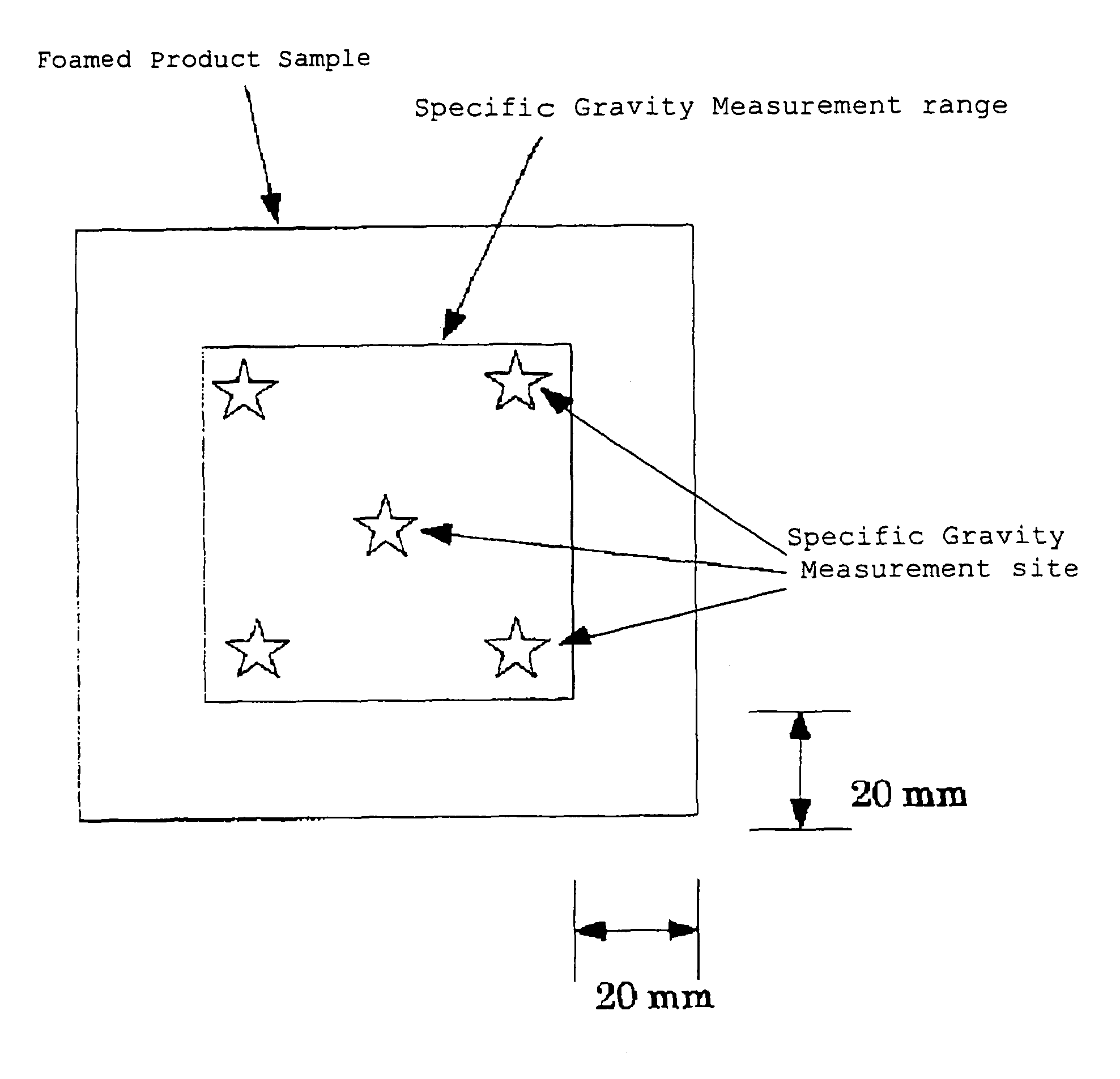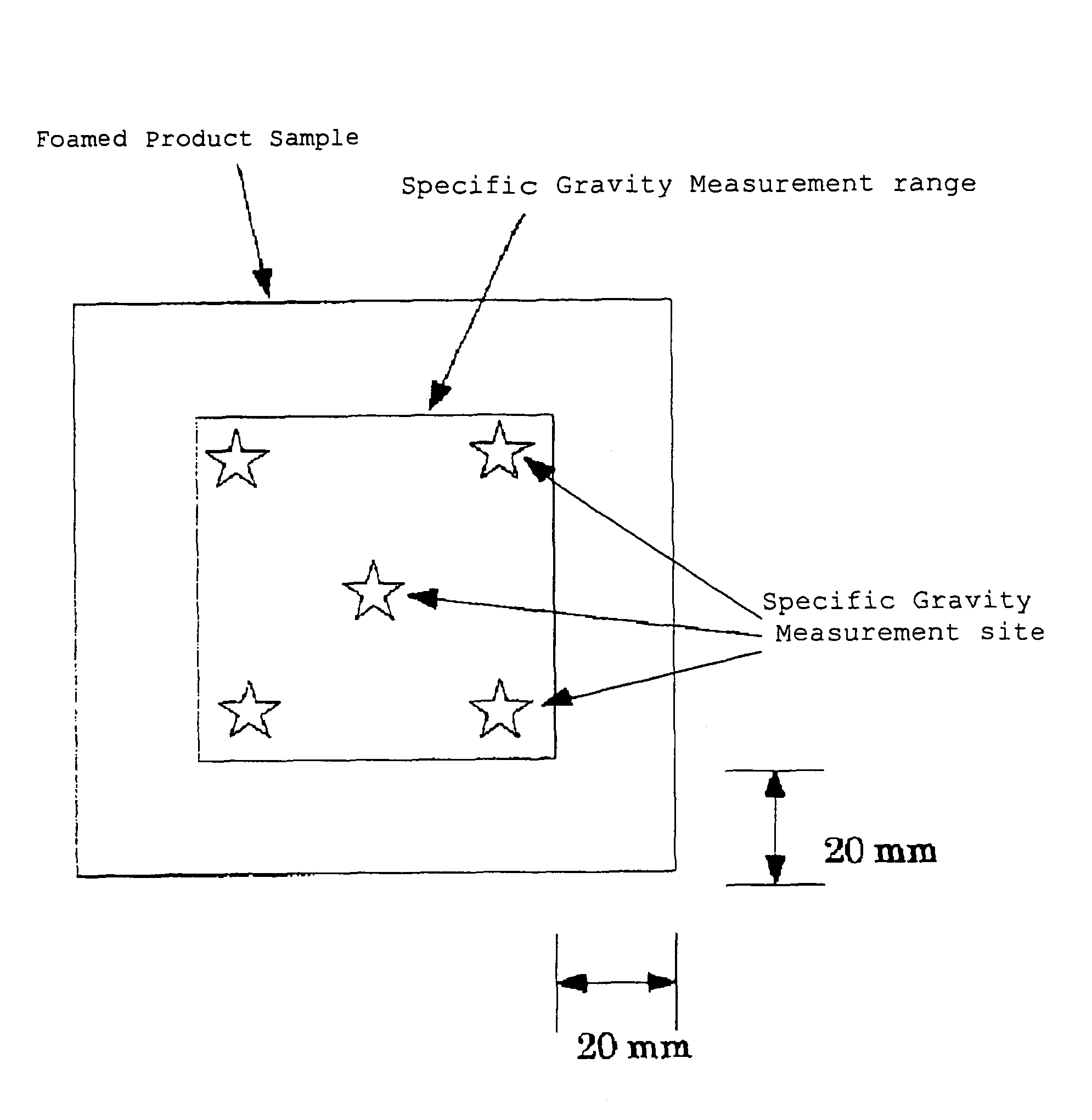Ethylenic copolymer, composition containing the copolymer and use thereof
a technology of ethyl alcohol and composition, applied in the field of ethyl alcohol copolymer, composition containing the copolymer, can solve the problems of loss of mechanical strength such as rebound resilience and the like, heavy weight of the sole, and insufficient performance, etc., to achieve excellent crosslinking properties, high vinyl-group content, and low specific gravity
- Summary
- Abstract
- Description
- Claims
- Application Information
AI Technical Summary
Benefits of technology
Problems solved by technology
Method used
Image
Examples
example 1
Production of Ethylene-1-Butene Copolymer A
[0297]Copolymerization of ethylene and 1-butene was carried out continuously at a polymerization temperature of 125° C. by using a stainless steel polymerization vessel (stirring rotation number=500 rpm) having a substantial internal volume of 1 L and a stirring blade in a completely filled state. The copolymerization reaction was carried out by continuously supplying hexane at 1.73 L / h, ethylene at 56 g / h, 1-butene at 90 g / h, hydrogen at 0.5 NL / h, bis(p-tolyl)methylene(cyclopentadienyl) (1,1,4,4,7,7,10,10-octamethyl-1,2,3,4,7,8,9,10-octahydrodibenzo(b,h)-fluorenyl)zirconium dichloride at 0.00015 mmol / h, a methylaluminoxane / toluene solution at 0.075 mmol / h in terms of aluminum, and triisobutylaluminum at 1.0 mmol / h from the side of the polymerization vessel to the liquid phase, so that the polymerization pressure was maintained at 3.8 MPaG. Further, a hexane solution of the continuously obtained ethylene-1-butene copolymer was stored in a h...
example 2
Production of Ethylene-1-Butene Copolymer B
[0301]An ethylene-1-butene copolymer B was obtained in the same manner as in Example 1 except for changing the polymerization temperature to 130° C. and the feed rate per hour of hexane to 1.82 L / h, 1-butene to 40 g / h, hydrogen to 0.6 NL / h, bis(p-tolyl)methylene(cyclopentadienyl) (1,1,4,4,7,7,10,10-octamethyl-1,2,3,4,7,8,9,10-octahydrodibenzo(b,h)-fluorenyl)zirconium chloride to 0.0001 mmol / h and the methylaluminoxane / toluene solution to 0.05 mmol / h in terms of aluminum.
[0302]The ethylene-1-butene copolymer B as obtained above had a density of 907 kg / m3 and an MFR (load of 2.15 kg) of 1.2 g / 10 min and was obtained at a yield of 43.5 g / h.
[0303]The physical properties are shown in Table 1.
example 3
Production of Ethylene-1-Butene Copolymer C
[0304]An ethylene-1-butene copolymer C was obtained in the same manner as in Example 1 except for changing the polymerization temperature to 110° C. and the feed rate per hour of hexane to 1.50 L / h, 1-butene to 210 g / h, hydrogen to zero, bis(p-tolyl)methylene(cyclopentadienyl) (1,1,4,4,7,7,10,10-octamethyl-1,2,3,4,7,8,9,10-octahydrodibenzo(b,h)-fluorenyl)zirconium dichloride to 0.00035 mmol / h and the methylaluminoxane / toluene solution to 0.175 mmol / h in terms of aluminum.
[0305]The ethylene-1-butene copolymer C as obtained above had a density of 860 kg / m3 and an MFR (load of 2.15 kg) of 0.27 g / 10 min and was obtained at a yield of 60.8 g / h.
[0306]The physical properties are shown in Table 1.
PUM
 Login to View More
Login to View More Abstract
Description
Claims
Application Information
 Login to View More
Login to View More - R&D
- Intellectual Property
- Life Sciences
- Materials
- Tech Scout
- Unparalleled Data Quality
- Higher Quality Content
- 60% Fewer Hallucinations
Browse by: Latest US Patents, China's latest patents, Technical Efficacy Thesaurus, Application Domain, Technology Topic, Popular Technical Reports.
© 2025 PatSnap. All rights reserved.Legal|Privacy policy|Modern Slavery Act Transparency Statement|Sitemap|About US| Contact US: help@patsnap.com



